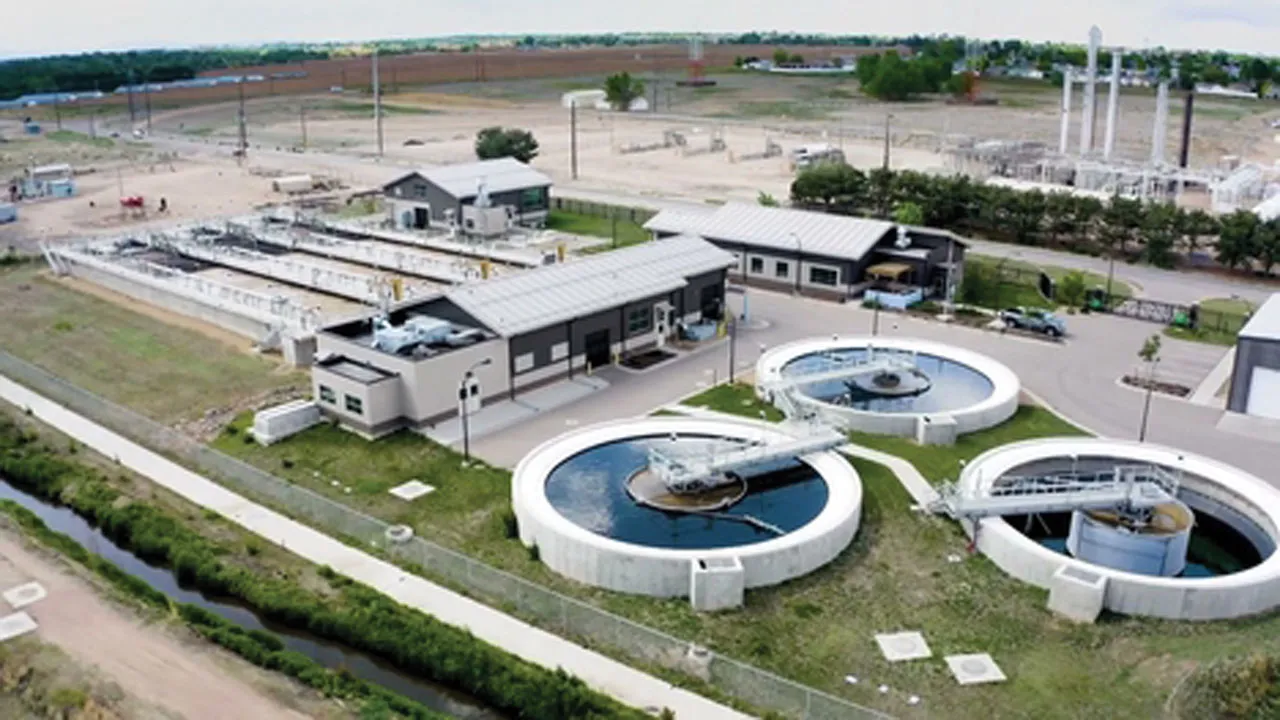Lyons recovers by embracing grit, grace, gratitude
Town continues to deal with loss of housing, damaged infrastructure after 2013 flood
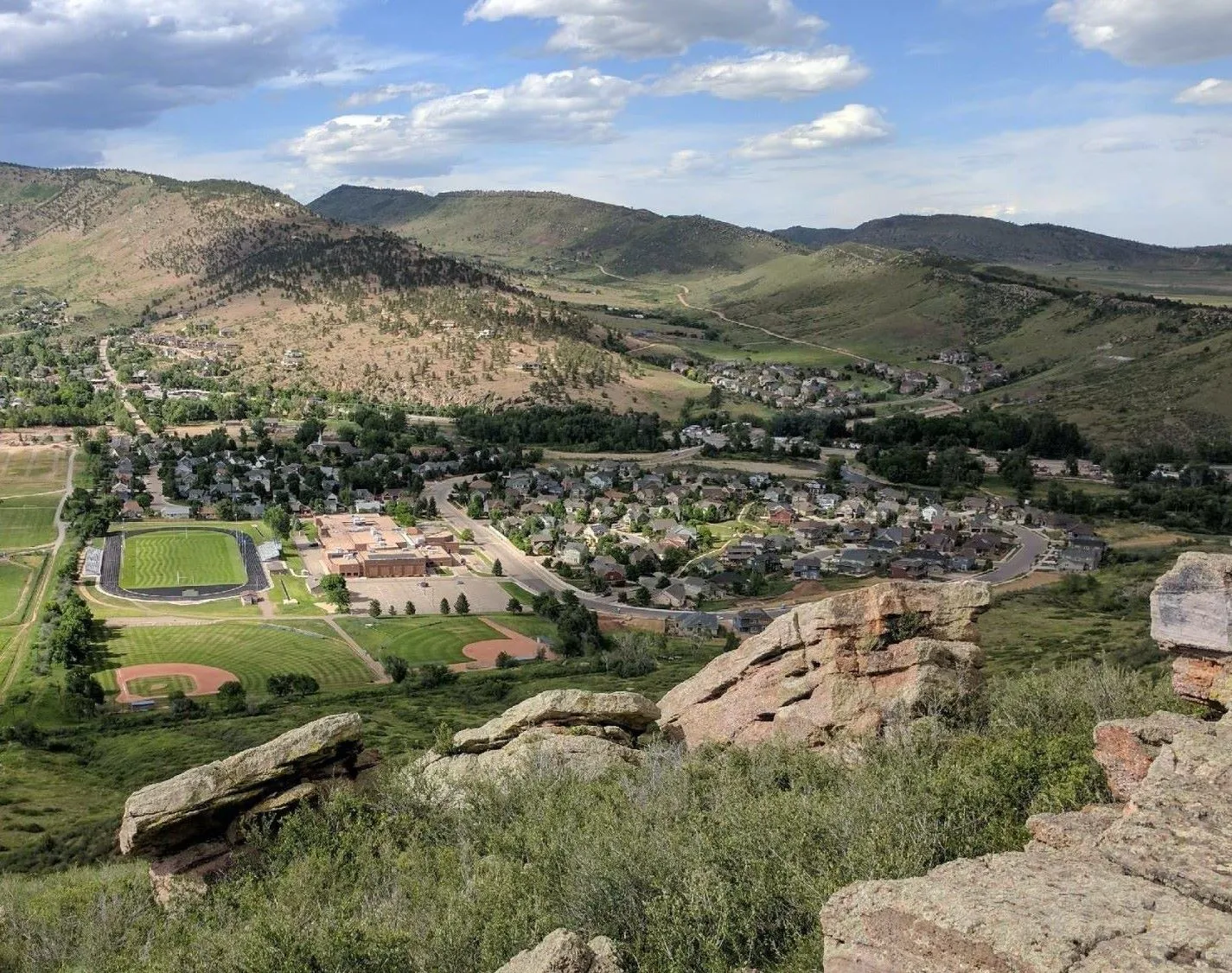
LYONS — Other cities and towns along the Front Range have largely moved on from the September 2013 deluge. For one town at the base of the foothills in Boulder County, some challenges remain — but so does the determination to build back better.
More than 18 inches of rain swelled the St. Vrain River to 10 times its normal volume, creating a 400-foot-wide gorge through the town of Lyons that destroyed more than 200 homes, many businesses and much of its infrastructure.
But the town survived thanks to what it calls “10 years of grit, grace and gratitude”: grit to remember the days after the flood when many town residents were evacuated while others were trapped on several islands in the torrent, grace to mark the $70 million in flood-recovery projects in addition to all the time and money spent by homeowners and business owners, and gratitude to honor the town’s resilience — symbolized by the one thing that didn’t change, the iconic Steamboat Mountain to the west.
But the town is still dealing with the impacts of the lost housing and the damaged infrastructure.
Although most of the main infrastructure projects included in the Lyons Recovery Action Plan were completed by 2022, Lyons voters will decide on April 2 whether to increase the town’s sales tax by half of one percent to pay for more street, sidewalk and stormwater improvements as well as the undergrounding of many electric lines.
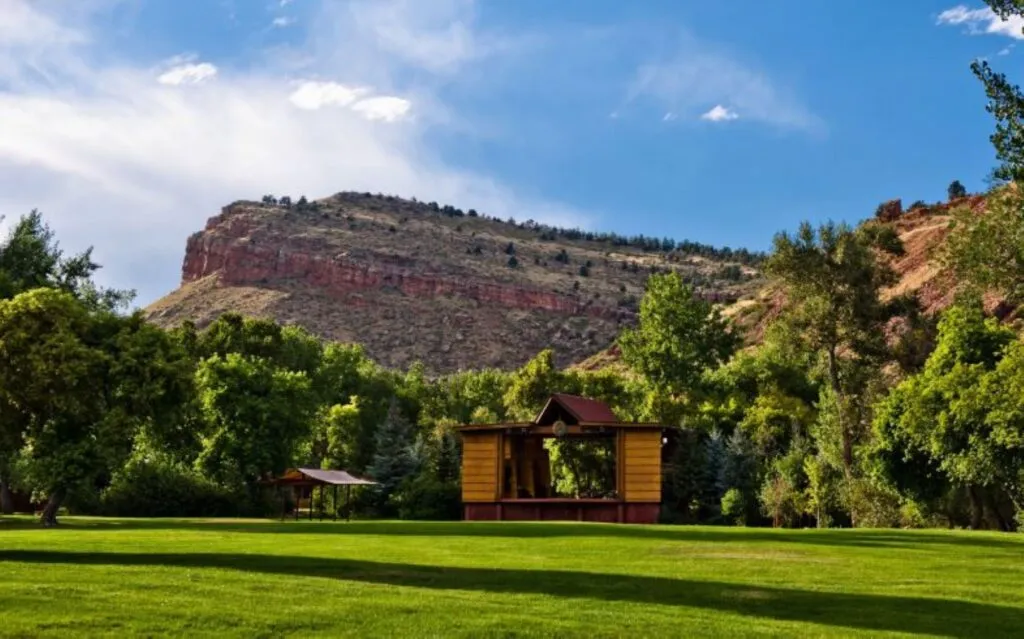
Crews this month are still working on road improvements along Broadway, which carries U.S. Highway 36 eastbound through the center of town. With funding from the Colorado Department of Transportation and the Denver Regional Council of Governments, the plan is to upgrade the corridor by narrowing the traffic lanes while adding curb extensions and a multimodal lane, plus parallel parking and sidewalks to improve access to businesses. That work was scheduled to be completed by fall, but now planners hope to have it done by spring, weather permitting.
Grants have helped push the recovery along.
According to Tracy Sanders, the town’s flood-recovery projects manager, Lyons has received 106 grants worth a total of more than $70 million from insurance, federal, state and local agencies to help with recovery efforts that include 72 projects.
A Revitalizing Main Street grant from CDOT enabled the town to make downtown more vibrant and inviting by installing lighting along a portion of Main Street, which carries westbound U.S. 36 through town a block north of Broadway. A $1 million grant from Great Outdoors Colorado helped the town rebuild Meadow Park, the site of many lucrative town festivals, which was destroyed in the flood. A $7 million project in LaVern M. Johnson Park, which previously had a single swing set, added a large playground and whitewater access for tubers and kayakers. Bohn Park received a skate park and shelter as well as a wheelchair ramp for anglers.
Grants also provided some assistance to help owners of flood-prone properties either elevate their buildings or sell them at pre-flood value. Some of those elevated homes can be seen in the Confluence neighborhood south of Main Street, where the flood destroyed two trailer parks, but more than two dozen lots remain vacant. The site of the trailer parks is now Rocky Mountain Botanic Gardens, which includes a bronze statue of an owl rebuilding a nest to symbolize flood-recovery efforts.
As part of a land-use and management plan for “deed-restricted buyout properties,” the town acquired 27 former residential properties with federal funding, and also used that money to remove flood-damaged buildings. Because the buyout properties had to be earmarked as “open space or recreational lands in perpetuity,” Sanders said, the town had to leverage this “newly created” open space to free up other available land for housing needs.
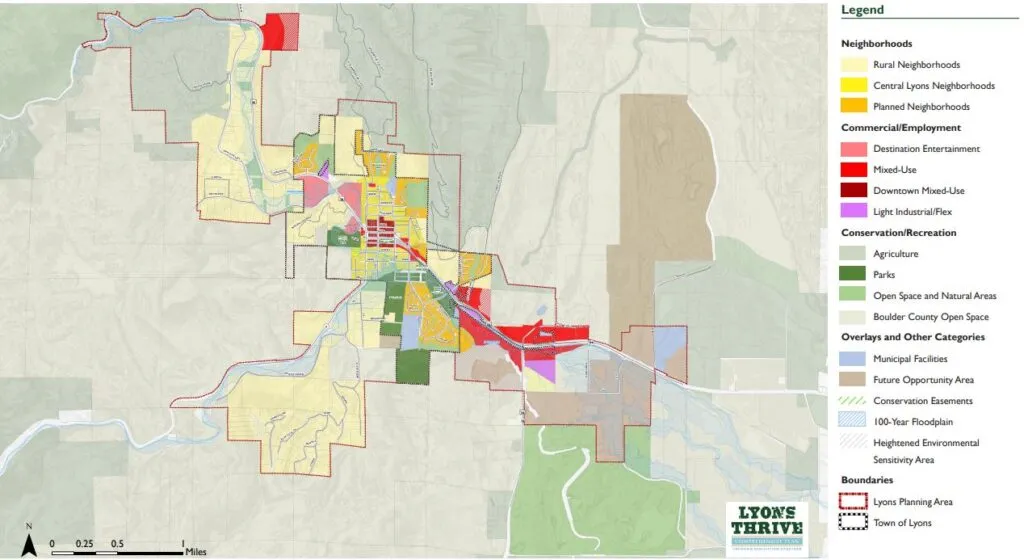
Town officials and business groups wanted to dedicate up to seven acres of the 26-acre Bohn Park to the Boulder County Housing Authority, which then would lease the land for 99 years and build a 66-unit housing project. However, voters in March 2015 rejected the plan on a 614-498 vote.
Town trustees had presented the plan as a way to make up for the loss of more than 200 homes to the Sept. 11-14, 2013, deluge and flood that devastated the Boulder County town at the base of the foothills. Opponents contended that other options than developing more than a quarter of the town’s main park weren’t adequately being considered.
Three months later, the town board found a way to chip away at the housing deficit, approving construction of six permanently affordable housing units at 304 Second Ave. The construction by Habitat for Humanity of the St. Vrain Valley, on the vacant site of Valley Bank and Trust, marked the first replacement residences to be built since the flood.
The town had better success at the polls in 2018, when Lyons voters approved a $2-per-night lodging-tax increase to cover the impacts of tourist traffic on town streets and municipal services.
Those proceeds didn’t prove adequate, however, so in November 2022 voters resoundingly approved raising the lodging tax to a minimum of 5% per night, and allowing the Board of Trustees to raise the levy up to 8% by resolution. Officials estimated the tax increase would generate an additional $135,000 in its first fiscal year to address visitor impacts and fund community projects and capital improvements as determined by the board.
Restoring the flow of tourist traffic was especially vital because of the town’s major money makers, the annual music festivals such as RockyGrass and Rocky Mountain Folks Festival that are held at the Planet Bluegrass ranch on the west edge of town.
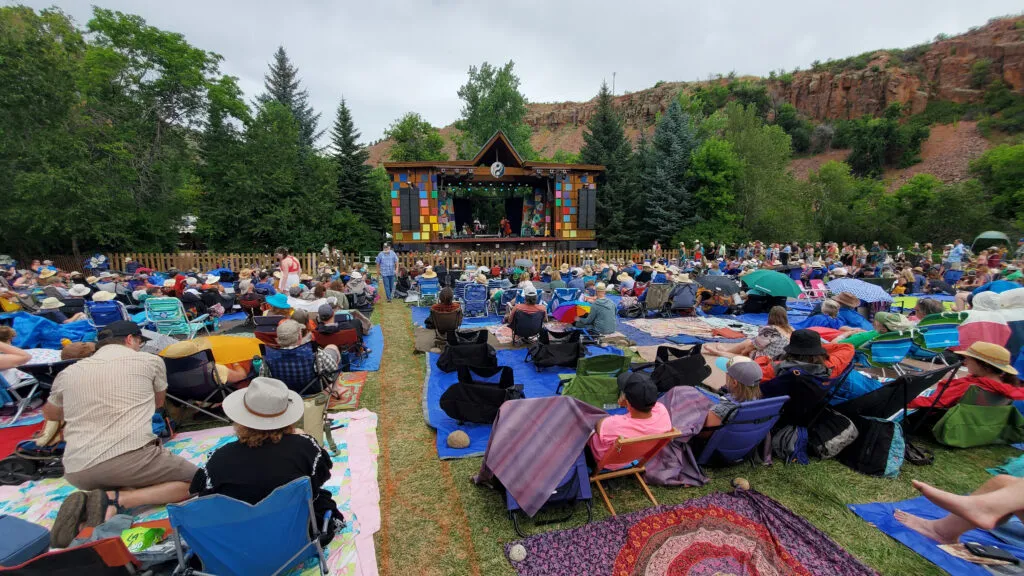
The raging North St. Vrain Creek cut a destructive swath through that property in September 2013 as well. One of the offices floated down the river and disappeared, while a kitchen-sized refrigerator from that office ended up in front of the Stone Cup coffee shop and the office’s roof landed on Planet Bluegrass owner Craig Ferguson’s overturned car.
That kind of destruction meant the St. Vrain River itself needed some love as well.
A 2014 report from the nonprofit Washington, D.C.-based Urban Land Institute studied ways that Larimer County communities could better prepare for natural disasters, but its findings had relevance for Lyons as well. Chris Carlson, a Loveland civil engineer, was credited in the report for one of its core messages.
“The typical approach to flood mitigation is that you have to build everything harder, stronger, straighten the river, build levees, keep the river from getting out of its banks,” Carlson said. “Sooner or later, you’re going to get a storm that’s going to topple all of that. In New Orleans, it was Katrina. For us, it is what we saw in 2013.”
Carlson’s alternative was simple: “Let rivers be rivers. Work with the forces of nature, rather than against them.”
That was the emphasis of Gary Wockner’s Save the Colorado organization, affiliated with those who have worked to preserve the flow of the Cache la Poudre River through Fort Collins. Wockner’s group met with Lyons officials over two years to help craft a resolution the town passed on Nov. 20: “The Town Board resolves that the St. Vrain Creek watersheds, including the plants, animals, and associated ecosystems, should be considered in all decisions that could impact them. The Town Board recognizes that the St. Vrain Creeks should possess, at minimum, the following fundamental conditions: a flow sufficient in quantity to support and maintain ecosystem health; a functioning channel and floodplain riverine ecosystem, including horizontal and longitudinal connectivity, areas for infiltration of precipitation and groundwater recharge, moving and depositing sediments, and the natural habitats for native plants and animals; that the watersheds feed and be fed by rainfall, snowmelt, and aquifers; that biodiversity is maintained; and that the predominantly free-flowing nature of the South St. Vrain Creek is maintained.”
Last Tuesday, the Lyons Town Board voted to award a contract for further recovery along St. Vrain Creek to Anderson Consulting Engineers. Earlier this month, it also addressed the housing shortage by allowing detached accessory dwelling units as a permitted use in most residential areas.
Recovery and resiliency have faced other challenges as well.
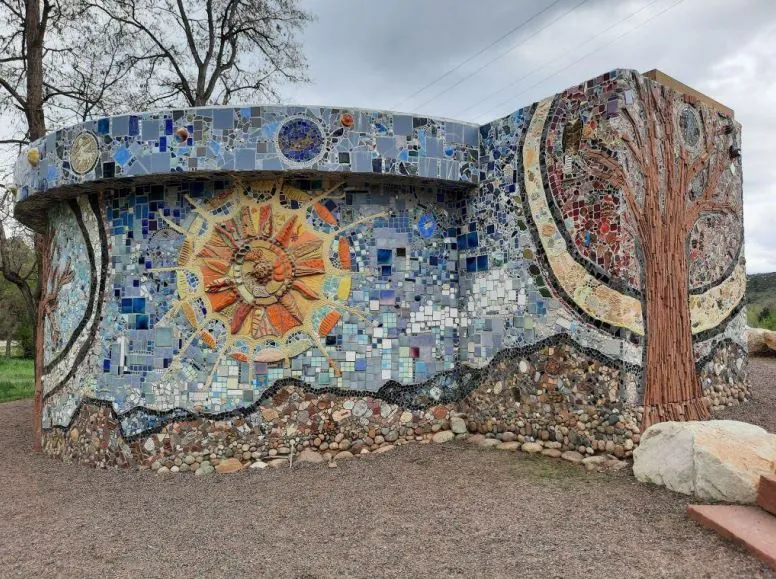
A row of downtown stores along Main Street at Fourth Avenue were destroyed by fire last April, and their demolition was completed on Jan. 25. Demolition was delayed by the need to remove asbestos throughout the property, which meant that the buildings had to be deconstructed and even their basements removed. Those lots are now vacant, and no plans have yet been revealed about what will happen there.
The town’s all-volunteer Chamber of Commerce is also a work in progress since its president and administrator resigned last year, and past staffers have said they had no applicants for either position so far.
However, new overnight accommodations are likely to help the town’s economy. Boulder-based A-Lodge, or Adventure Lodge, an outdoor recreation-centric hotel off Boulder Canyon Drive, opened a second location in 2020 with six rooms at 338 Main St. in Lyons, the former location of Aspen Leaf Motel.
And on Nov. 16, the Lyons Urban Renewal Authority approved an amended redevelopment and reimbursement agreement with Moss Rock Development LLC, giving a green light for construction of a long-planned 79-room boutique hotel across Main Street in the same block. That hotel would include a restaurant, a rooftop bar and lounge, meeting rooms, fitness center and spaces for specialty retail.

But the work of recovery goes on, with fresh faces at the table, given that most of the businesses on Main Street now are new since 2013, as are up to 35% of the town’s residents.
The town still is working with state and federal agencies to complete the final closeout of recovery projects and release final payments and matching funds.Sanders said closing out Federal Emergency Management Agency projects takes one to four years.
According to the Flood Recovery Action Plan, “Lyons has a strong business community and unique local economy. Nearly all of our businesses are locally owned and operated, and the town enjoys regional business patronage. We have a well-established reputation for local music and arts, and incredible outdoor recreational amenities that attract many visitors from Colorado and across the United States.
“The September 2013 flood caused significant harm to our economy and local businesses. Restoring local economic activities is one of the crucial first steps we must take in order to achieve a sustainable disaster recovery.”

Other cities and towns along the Front Range have largely moved on from the September 2013 deluge. For Lyons, at the base of the foothills in Boulder County, some challenges remain — but so does the determination to build back better.

